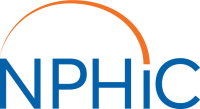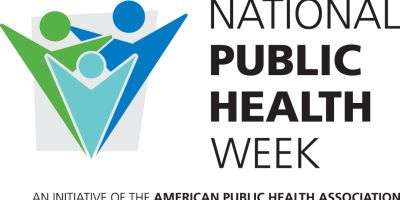Sharing Knowledge
Expertise
Resources
Making Public Health Public
Premier Network of
Public Health Communicators
Increasing the Dissemination of
Accurate Information
2025
National Conference on Health Communication Marketing and Media
Short Reel: "Voices, Vision, and Vibes – A Recap”
Thanks to all who attended and made the week so special!
2025
National Conference on Health Communication Marketing and Media
Short Reel: "Voices, Vision, and Vibes – A Recap”
Thanks to all who attended and made the week so special!
LATEST NEWS HIGHLIGHTS

AI Deepfakes of Real Doctors Spreading Health Misinformation on Social Media
A new investigation highlights a growing public health threat: AI-generated deepfake videos impersonating real doctors to spread health misinformation and sell unproven supplements on social media. Factcheckers uncovered hundreds of manipulated videos using altered footage of respected health experts to promote products targeting issues such as menopause, undermining public trust and exploiting perceived medical authority.
The delayed removal of this content across platforms underscores challenges in detection, accountability, and response. For public health communicators, the findings reinforce the need to address false credibility, strengthen media literacy, and proactively guide audiences toward evidence-based information as AI-driven misinformation becomes more sophisticated and widespread. Read more from The Guardian here.

Americans’ Social Media Use 2025
New Pew Research Center data show that social media use remains widespread in the U.S., with important implications for public health communication. YouTube (84%) and Facebook (71%) continue to reach the largest shares of adults, while Instagram now reaches half of the population. Use of TikTok, WhatsApp, and Reddit has grown steadily in recent years, particularly among adults under 30.
Daily use is highest on YouTube and Facebook, though younger adults are far more likely to use TikTok daily. The findings underscore the need for public health communicators to tailor messages by platform, age, and audience demographics to maximize reach and impact. Read the study from Pew here.

Survey: US Views on New Vaccine Development and False Information After COVID-19
A new paper led by Gillian K. SteelFisher, with co-authors including members affiliated with the National Public Health Information Coalition (NPHIC), examines U.S. views on vaccine development and false information following COVID-19. Based on a nationally representative survey of 1,632 adults, 81% said vaccine development is “mostly a good thing,” largely due to protection of vulnerable populations and prevention of severe illness.
While 78% identified false vaccine information as a major problem, few believed it is spread mainly with bad intentions. Findings highlight opportunities for public health communicators to build on positive vaccine attitudes while using careful, respectful risk communication around new vaccines and misinformation. Read the paper here.
FEATURED TOPICS
Voices From the Field Podcast: Former NFL Stars and CDC Gear-Up Against Cancer
Written on

During the 2025 National Conference on Health Communication, Marketing, and Media (NCHCMM) in Atlanta, NPHIC conducted a special series of interviews titled Voices from the Field as part of its Public Health Speaks podcast. Over the next several weeks, NPHIC will release one new episode each week in this seven-part series, featuring conversations with public health leaders, communicators, and partners who are driving change across the nation.
The first episode kicks off with a compelling discussion on the partnership between the National Football League Alumni Association (NFL Alumni) and the Centers for Disease Control and Prevention (CDC) in their “Gear Up Against Cancer” campaign. This national initiative aims to raise awareness about the impact of colorectal cancer and the importance of early detection.
According to the CDC, colorectal cancer is one of the leading causes of cancer death among men and women in the United States. Data show that Black and Latino men face a higher risk, with Black men 40 percent more likely to die from the disease. Through this campaign, the NFL Alumni and CDC are using trusted voices to spread a life-saving message: get screened.
In the interview, NPHIC’s Olivia Biggs speaks with campaign partners about how regular screenings, open conversations, and community engagement can shift behaviors and save lives. Former NFL wide receiver Perry Kemp shared a heartfelt message: “Hey, it happens to football players and our families too. Prevention is everything — get tested.”
The Gear Up Against Cancer campaign has already achieved impressive results — 775 million impressions in its first six months — and continues to build momentum through listening sessions and community outreach.
We encourage all of our readers to listen to this powerful first episode and stay tuned each week as NPHIC releases the remaining Voices from the Field interviews. Each episode explores a different public health topic, offering real-world insights and inspiring stories from those working on the front lines of health communication.
Listen to the podcast here and subscribe to the series to hear more Voices from the Field!
State of Obesity Report 2025: Better Policies for a Healthier America
Written on

The 2025 State of Obesity report highlights persistent challenges and emerging opportunities in addressing the nation’s obesity crisis. While 2024 data show a slight decline in states with adult obesity rates above 35 percent, nearly 40 percent of U.S. adults remain affected, with higher rates among Black and Latino populations and residents of rural communities. Childhood obesity continues to rise, disproportionately impacting youth of color.
The report emphasizes structural factors—economic, environmental, and social—that shape access to healthy food and physical activity. It calls for sustained investment in federal prevention programs, nutrition supports, healthcare access, and community-level interventions to reduce disparities and improve public health outcomes. Read the report from TFAH here.
WHO Warns of Widespread Resistance to Common Antibiotics Worldwide
Written on

A new WHO report warns that antibiotic resistance is rising globally, with one in six bacterial infections in 2023 resistant to treatment. Drug-resistant Gram-negative bacteria, including E. coli and K. pneumoniae, are increasingly linked to severe bloodstream infections, with resistance exceeding 70% in some regions. Between 2018 and 2023, resistance rose in over 40% of monitored pathogen-antibiotic combinations.
While participation in the WHO GLASS surveillance system has grown, nearly half of countries still lack reliable data, particularly where health systems are weakest. WHO urges countries to strengthen laboratory capacity, report high-quality data, and implement coordinated interventions to preserve antibiotic effectiveness and guide public health policies. Read more from WHO here.
Trust in Media at New Low of 28% in U.S.
Written on

Trust in U.S. news media has reached a historic low, with only 28% of adults expressing confidence in newspapers, television, and radio to report fully, fairly, and accurately. Confidence has declined across all partisan groups, with Republicans’ trust now in single digits (8%), independents at 27%, and Democrats holding a narrow majority (51%).
Generational divides are pronounced: adults 65 and older show higher trust, while younger adults remain highly skeptical. For public health communicators, these trends underscore the challenge of effectively conveying health information in a polarized media environment and highlight the importance of building credibility and trust with diverse audiences. Read more from Gallup here.
Latest Blog Posts
Podcast
"Public Health Speaks"
A bi-monthly podcast series about public health issues to educate, inform and assist our members, partners and affiliate organizations in understanding and overcoming urgent communication challenges
From Our Partners
CDC Online Newsroom
- CDC Adopts Individual-Based Decision-Making for Hepatitis B Immunization for Infants Born to Women Who Test Negative for Hepatitis B Virus
- ACIP Recommends Individual-Based Decision-Making for Hepatitis B Vaccine for Infants Born to Women Who Test Negative for the Virus
- Salmonella outbreak linked to moringa leaf, an ingredient in powdered supplements
- CDC continues to note illnesses despite product recalls and asks consumers to check for recalled foods in Listeria outbreak linked to prepared meals
- CDC Immunization Schedule Adopts Individual-Based Decision-Making for COVID-19 and Standalone Vaccination for Chickenpox in Toddlers
- Statement from Laura Chanchien Parajón, MD, MPH, Director (Acting), CDC's National Center for Chronic Disease Prevention and Health Promotion, on the passing of Suzy Ellis, Tips From Former Smokers® participant
- Listeria Outbreak to include more Prepared Foods
- CDC Reports Latest National Data on Syphilis in Newborns and Sexually Transmitted Infections (STIs)
CDC Latest COVID-19 Science Update
CDC FluView Weekly Summary
CDC Morbidity and Mortality Weekly Report
- Leisure-Time Physical Activity Among Women of Reproductive Age - United States, 2022 and 2024
- Coal Workers' Pneumoconiosis-Associated Deaths - United States, 2020-2023
- Rabies Cluster Among Steers on a Dairy Farm - Minnesota, 2024
- Detection of Paraburkholderia in Clinical Specimens Associated with Use of Nonsterile Ultrasound Gel for Percutaneous Procedures - United States, Canada, and Israel, May 2023⎯April 2025
- Effectiveness of 2024-2025 COVID-19 Vaccines in Children in the United States - VISION, August 29, 2024-September 2, 2025
GET INVOLVED! NPHIC SOCIAL MEDIA
NPHIC YouTube Channel
- Vessel Sanitation Program: Protecting Public Health on Cruise Ships since 1975
- 2025 – 2026 Clinical Recommendations for Seasonal Influenza Prevention and Control
- Recognize Infection Risks in Healthcare
- What is the Total Testing Process?
- Importance of Clinical Partnerships in Ensuring Quality Safety of Point-of-Care-Testing
- BMBL 6th Edition Updates Clinical Laboratory Biosafety Recommendations
- CDC ZOHU Call September 3, 2025
- Advisory Committee on Immunization Practices (ACIP) - December 5, 2025 - Day 2 of 2



















